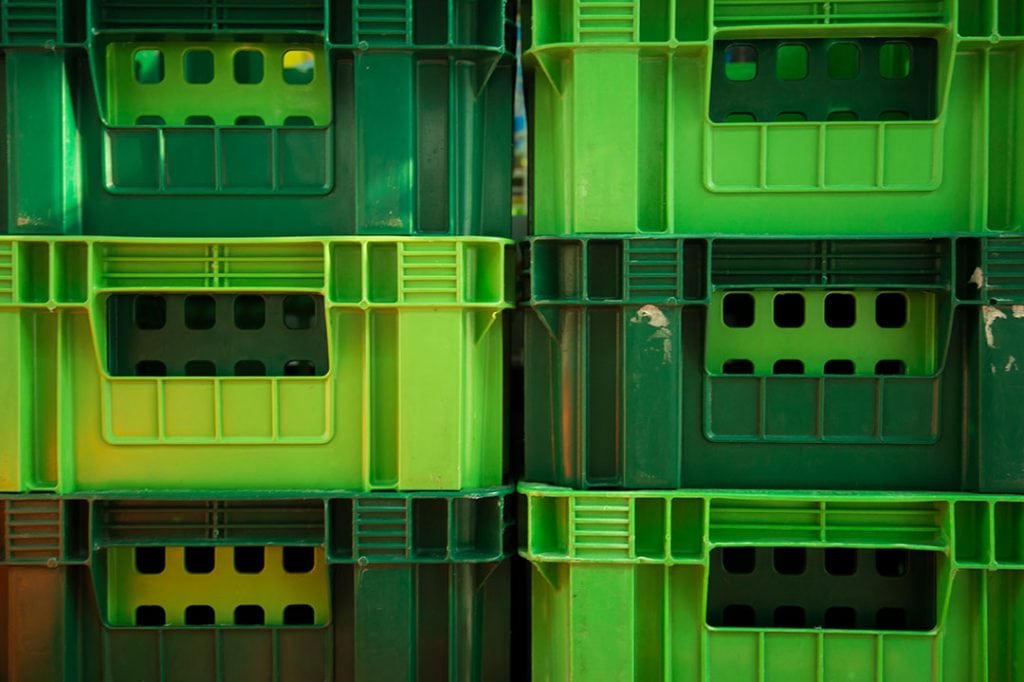
Industry groups want the federal government to add a variety of recycled-plastic products into federal procurement guidelines. | Suttipong Prangsuwan/Shutterstock
As the U.S. EPA updates its lists of recycled-content products purchased by federal agencies, plastics recycling stakeholders are making their voices heard.
For the first time in 13 years, the U.S. EPA is going through the process of updating what it calls its Comprehensive Procurement Guidelines (CPGs), which push federal agencies toward buying 61 recycled-content products in eight categories: paper, vehicular, construction, transportation, park and recreation, landscaping, non-paper office and miscellaneous products.
As part of the update, the EPA asked for public comments on the existing lists, seeking feedback on whether products should be added or deleted, recycled-content levels adjusted and more. In addition to the lists, the EPA produces advisory notices to help agencies go about buying specific products in those categories. EPA sought feedback on those advisory notices, too.
The agency received 114 comments before the July 6 deadline.
Among them was a letter from the Association of Plastic Recyclers (APR) asking the EPA to refer to APR’s directory of vendors selling recycled-plastic products. The directory currently lists producers of pallets; crates, totes and bins; slip sheet; and dividers.
APR’s letter also asked the EPA to require third-party verification of post-consumer content claims. Because there’s too little post-consumer plastic available on the market to meet demand, some companies falsely claim their products contain PCR. APR referenced its recently launched PCR certification program.
“The pressure on companies to fulfill sustainability commitments has created huge demand for post-consumer recycled plastic despite a short supply,” the letter states. “A new greenwashing risk has emerged: bad actors are already exploiting the demand/supply curve gap to sell manufacturers ‘recycled content’ that is not, in fact, recycled. Post-consumer resin bears the highest risk for fraudulent claims.”
APR President and CEO Steve Alexander submitted the letter co-signed by leaders at several other groups: Josh Jacobs of UL Environment & Sustainability, Nicole Munoz of SCS Global Services, Tad Radzinski of GreenCircle Certified, and Roger B. Mattila and AM Testing & Services. (Disclosure: APR owns Resource Recycling, Inc., publisher of Plastics Recycling Update.)
Comments on recycled-plastic products
Other associations submitting comments included the American Chemistry Council (ACC), Institute of Scrap Recycling Industries (ISRI) and the Vinyl Institute.
ISRI issued a press release about the detailed comments it submitted. The group urged EPA to add a number of recycled-plastic products to its lists: drainage tile, corrugated pipes, railroad ties, totes, crates, grocery bags, uniforms, dividers/shields, beverage containers, cleaning supply bottles, recycling and trash bins, storage shelving, writing instruments, computer casings, tape dispensers, staplers, floor mats and motor oil bottles.
A number of organizations focused their comments on one type of product. Three organizations discussed roofing products that contain recycled polymers: Chemical Fabrics and Film Association (CFFA); Sika Corporation and Single Ply Roofing Industry (SPRI). The PVC Pipe Association commented specifically about pipes. And plastics-to-fuel company TerraGenix urged EPA to add petroleum products derived from post-use plastics.
Waste Management (WM), the largest municipal solid waste hauler in North America, asked EPA to add to the list 10% recycled HDPE carts and containers and 30% recycled PET textiles.
WM has started buying and deploying curbside carts made with 10% recycled HDPE. Through the collaboration, WM provides bales to KW Plastics, which produces recycled plastic pellets for Cascade Cart Solutions, which mixes the recycled resin with virgin and molds carts.
In his comment, Michael C. Jensen, senior counsel and director of regulatory affairs for WM, asked that EPA also update its guidelines to recognize that over 60% of PET production is used in textiles. About half of the PET WM collects through its residential curbside program is sold into the textiles market, he wrote.
“Much of this material then is used to make high-quality uniforms, safety gear, and other clothing for the U.S. Department of Defense, the U.S. Department of Homeland Security, and other federal and state procuring agencies,” Jensen wrote.
According to the EPA’s request for comments, before finalizing any changes to the CPGs, the agency will issue a public notice and solicit another round of comments.
A version of this story appeared in Resource Recycling on July 21.
More stories about industry groups